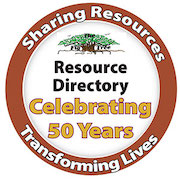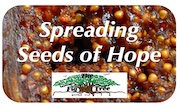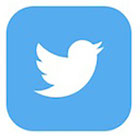Powwows are a time for celebration, connection
Powwows such as Julyamsh, the powwow offered by the Coeur d’Alene Tribe in July 2016, serve several functions within Native American communities.
 |
| Quanah Matheson Coeur d’Alene cultural affairs director |
Powwows offer a time to celebrate. They are filled with color and sound and movement. Spectators come from around the nation and world to experience the pageantry.
For Native Americans, powwows are also a way of life, according to Quanah Matheson, Coeur d’Alene Casino cultural affairs director, who was master of ceremonies for Julyamsh.
“Many Native Americans use that as their spirituality and walk, as well as a time to celebrate and be healed,” he said.
Powwows grew out of the celebrations the Indians put on when their warriors would return from an expedition—a hunt, a raid on a neighboring village or a war, he said.
Warriors would stop short of arriving home and change into their finest regalia. They would begin a serpentine approach into camp. They would sing a snake dance song, and then a song of victory, he explained. This return meant it was time for a social dance to welcome them back. It allowed them to share the story of their journey and display what they had brought back with them.
Times changed.
Native Americans were uprooted from their traditional homes and forced onto reservations. They were told their languages and traditions were no longer acceptable. Much was lost over time, Quanah said.
Powwows now are a chance to recover the languages, history and traditions of the past, and reinforce their importance for Native American identity.
The horse parade at the beginning of Julyamsh, along with the grand entry, reminds participants of the serpentine entry of warriors.
“The grand entry begins with a prayer,” Quanah explained. “It acknowledges where we come from and who we are.”
The eagle staff, the original emblem of Indian people, is brought in—always first. It is followed by the flags of the United States and Canada, and then flags of the states represented. It is accompanied by the flag song.
A victory song follows.
“We are still alive today,” he said. “The song celebrates our resilience, our growth and the maintaining of our Indian identity. We are not victims. We are over-comers. We are forgiven, forgive and move forward.”
Drums and singing accompany the grand entry, as the dancers—first men, then women—come in. The rhythms and songs celebrate the history of the native peoples, he explained.
All sit in concentric circles, beginning with leaders, musicians and dancers, then those who are there to watch, followed by those providing food. It is understood that beyond that circle is the circle of the “old ones,” the ancestors, who still are very much with them.
The entire powwow represents a holistic understanding of life, according to Quanah.
“People’s spirits soar. The dancing often is for others who cannot dance, as well as for the individual dancers. It’s a way of bringing life into balance, harmony and order,” he said.
A powwow provides food as a way to say “Thank you for coming to our lands! Welcome home!” It celebrates family—“our home, our circle, our traditions and our heritage,” he said.
“We come to celebrate and enjoy ourselves,” he continued. “When we come to a place of enjoyment, with songs, prayers and culture, it is spiritual medicine.”
The number four is important to Native Americans. There are four elements: earth, water, air and fire. There are four directions. There are four races of people, represented often in the colors used in the outfits that are worn: red, yellow, black and white.
In the regalia worn by people from southern tribes, he added, the blue of the ocean and green of verdant growth also appear.
The regalia that is worn is full of meaning. Many times, outfits have been passed down from generation to generation, with particular family symbols in the beading and use of feathers. Different styles of dress are worn for different styles of dances.
The regalia demonstrate also how one cares for oneself and others over time. It shows a person’s mindset by how well he or she cares for it, Quanah said.
“Outfits have a life to them,” he said. “They are an enhancement of our identity. It is important to carry regalia in a certain way, to treat it like a relative.
“The colors and design represent where we come from. They represent our family and our family’s belief. They help tell the old-time story of our people.”
Competition is built into powwows, although some participate simply for the joy of it and in honor of others.
“The competitive spirit makes us better ourselves,” he explained. “Our warrior spirit comes out. The prizes also give people money, which they use to travel home or to the next powwow, or to care for their families.”
The dances have meaning, according to a pamphlet put out about Julyamsh:
• The men’s grass dance originates from the way scouts sought a site on which to camp or have a meeting. They tamped the grass down with a special dance. It also represents how a warrior would stalk game. Regalia for the grass dance includes strands of yarn hanging from the arms and waist to simulate grass and includes a roach—headdress—with two feathers attached so they move as the dancer moves.
• The women’s traditional dance is more stately, slow-moving or simply with a nonmoving bouncing step. The outfits, often made of buckskin or wool, are heavily beaded, along with quill work and other decorative features from nature. The colors are quiet.
• Younger, energetic women participate in the women’s fancy/shawl dance wearing brightly colored, elaborately decorated regalia.
• In the men’s traditional dance, participants imitate the animal spirit world. They wear eagle feather bustles and grouse feathers, as well as deer, elk and porcupine headdresses. Their regalia pieces may have been passed down for generations.
• The men’s fancy dance is relatively new. Young men move in unique, energetic ways. Competition between dancers and singers may spring up. When the singing stops, the dancing is also supposed to stop, right with the end beat. Singers try to end in unexpected ways. Dancers gain or lose points, depending on how well they do.
• The women’s jingle dance is done in dresses covered with small metal cones that jingle when they move.
The dances, singing, drumming, sharing food, and visiting with friends and family help Native Americans remember from where they have come, and build their pride in their history and how far they have come, Quanah said.
“There are wonderful things about the sound of drums and voices and dancing in unison together, circles and circles,” he reflected. “This is energy that heals. It is medicine to us.
“When we look like our people and when we stand a certain way, we are seen to be strong and to know our identity,” he said.
The powwow way of life is somewhat modern. Drums reawaken the old ways. It is an awakening of Native American spirit, he explained.
“Powwows also are a time of learning from the oldest to the youngest. The circles we are in are a lifelong experience,” he said. “When we go back home to our real home at the end of our lives, we’ll be greeted by long lost relatives. It will be a continuation of life as we have known it, but with everlasting grass, with no pain or hunger, and with dances and songs, horses and animals.
“We keep coming into these circles with family and extended family. We are sovereign beings, children of God. That’s our true identity,” he said.
“We are born to a mother and father, who pass on our cultural identity. We strive to achieve harmony and balance. Our goal is to talk and present ourselves in a focused way, showing we know who we are and where we come from,” Quanah said.
“It is important to keep our heads up high, showing we are proud, but not arrogant. Those are strong individuals, who have found their center. Powwows celebrate that strength and invite that centering,” he said.
For information, call 800-523-2464, ext 7234 or email at qmatheson@cdacasino.com.
Copyright © September 2016 - The Fig Tree






